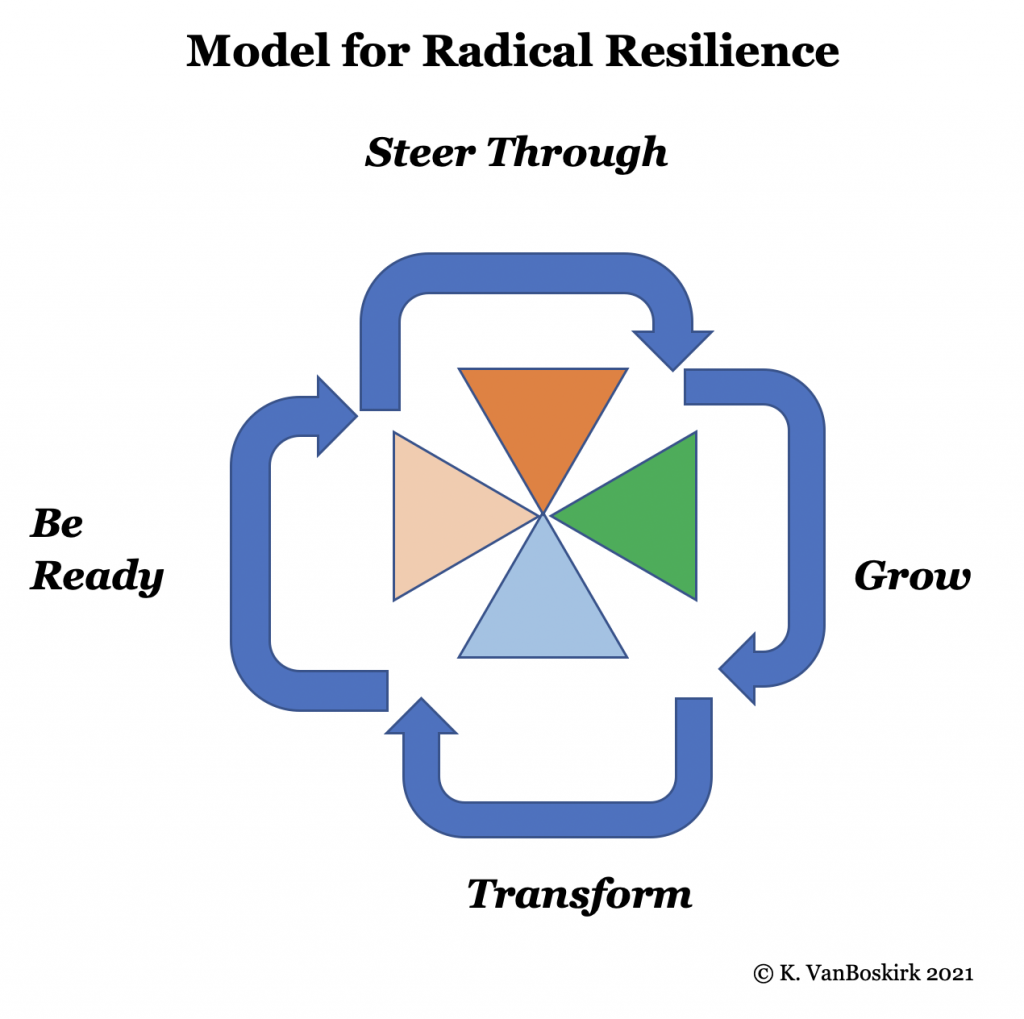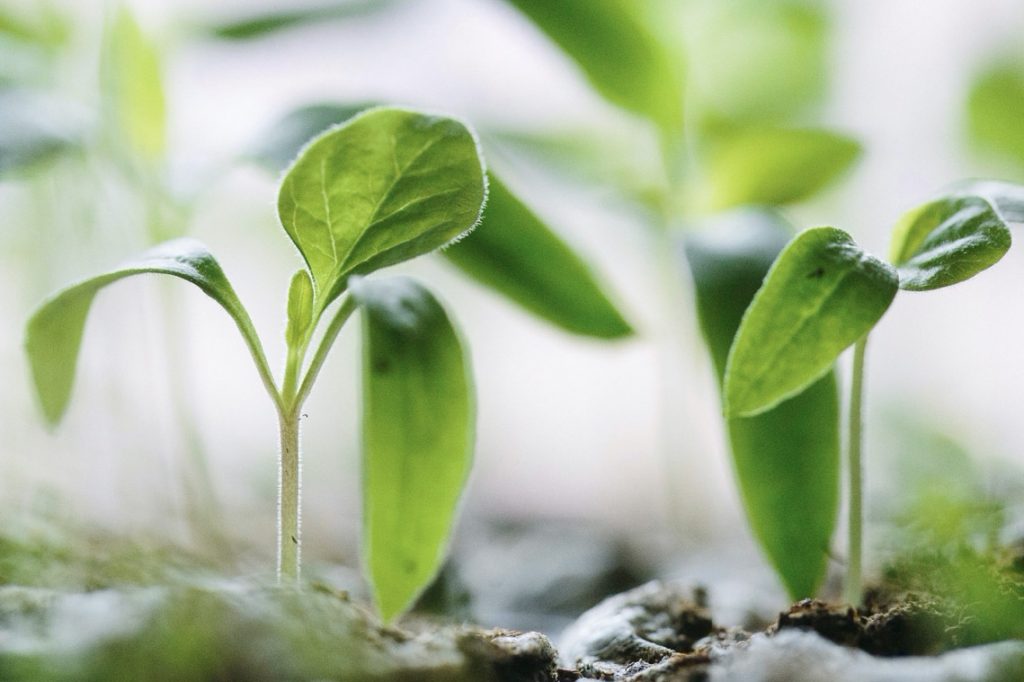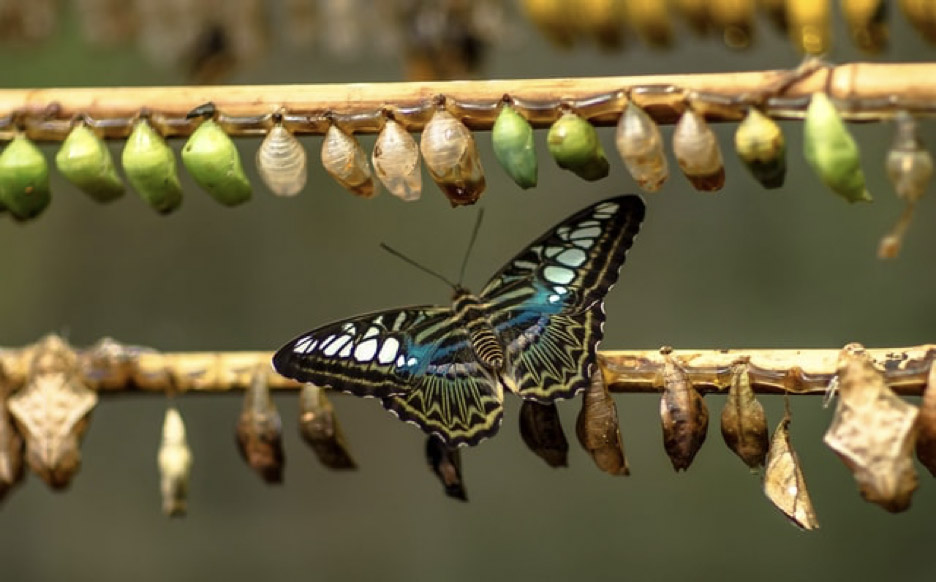Photo by Håkon Grimstad, Unsplash.com
What is the process of becoming? I experience it as a fluid process: one state changing into another. When we mention the word transformation the butterfly is the first symbol to appear. Is it because the change that the caterpillar goes through is so drastically different than its original form? It is clearly the most noticeable visually. The Oxford dictionary defines transformation as: a thorough or dramatic change in form or appearance. Surely the butterfly is a fine example. Miriam Webster says it differently. The first definition is an act, process, or instance of transforming or being transformed. I prefer this definition even though it does the unsettling thing of using a form of the word itself as part of the definition—always somewhat disconcerting. Perhaps the simplest definition might be transformation is the process of changing. This is the closest to what I mean when I say Transformation is Becoming. In my Model for Radical Resilience transformation is the fourth stage directly following Grow. An illustration of the four stages follows:

We can see that Transform is a natural flowing out of the phase of Grow.
This model implies our ability as humans to fulfill our potential. Even when we experience adversity we are able to grow and transform possibly, in part, because of the adversity. With the correct mindset and the regular practice of helpful skills, we are able to achieve what is known in the current literature as post-traumatic growth.
I have had many transformations in my life. One of the first was when I must have been 8 or 9. Books had always been special for me. They were what was in my bed instead of dolls as a young child. After I had learned to read in a more serious way around third grade, my mother decided to take me to the library.
I will never forget the first trip to the McCormick Library on Fourth Street in Harrisburg. It was directly across the street from the Susquehanna River, which offered a beautiful view. The library was an imposing building to a young girl—gray stone with a sturdy edifice. It looked official. Yet, for whatever reason, it was not scary like the hospital building that I had visited earlier at age 5.
When we walked through the door of what I remember to be the children’s section, I recall being struck by the fact that these books were all inviting. And they were all for me. The possibilities were endless, and I could have remained there for days. I got my own card as a kind of passport to adventure. It was a treasure trove of people’s thoughts, imaginings, and experiences. I could even bring some of these treasures home with me.
There were walls of books. Cozy chairs were tucked away in inviting nooks. I could sit in these almost cave-like places to page through enticing books with pictures or interesting facts. Maps hung on the walls. A sweet older woman (maybe 35) came up to me to ask if she could help me find something I was looking for. The air had a particular scent that I recognized was like my shelves of books at home. Friends were here, too—like Nancy Drew and the Hardy Boys.

Once I made my choices, I remember being mesmerized as I held these books to my chest, as if my heart could actually decipher them. Walking out of the building I was truly transformed. I could never return to a state of not knowing such a cave of diamonds and emeralds existed for me. The threshold had been crossed. I was different. I had a world of possibility ahead of me. This experience didn’t just grow me. It transformed me by providing a foundation from which I could step to the next level of my growth.
Another example of transformation is the seed. There are probably millions of seed types. Each has its separate DNA code for what it will become. An acorn makes an oak tree not a birch. Within the seed is all of the data necessary to bring about its potential. However, it benefits from nourishment, ideal conditions, and certain actions that can boost its growth and development. So too, we humans have a certain amount of potential. We are always becoming. Our potential is expanding with nourishment, support, and certain actions that grow and transform us.

In our “seedling selves” we have a certain reality. With attention to the right conditions, actions, and mindset we expand our potential and grow into all that we can become.
These are several examples of transformation. My library transformation came after a life expanding experience. The seedling example is an example of biological transformation that can be impacted by many other circumstances. There are different kinds of transformations, some coming after we grow through a challenging experience. I believe the importance of transformation is the experience itself, and knowing that it is possible. We start again to experience our lives from a different level. I believe it is within this fourfold process of Be Ready, Steer Through, Grow, and Transform that we can reach the fullest potential in our lives. We become more of who we can be. We start over each time a new challenge comes to us but from a different starting place. We have transformed from the last time we met a challenge and grew through it. With each challenge or adversity, we start from a new level with more resources.
REFERENCES
Oxford Dictionary.com
Scannell, Dr. Alice Updike, (2017). Radical Resilience : When There’s No Going Back To The Way Things Were, A. Beekman Updike, Portland, OR
Miriam Webster.com Dictionary
Author: Kathryn VanBoskirk, LCSW
email: kvb.communityenhancementproject@gmail.com
